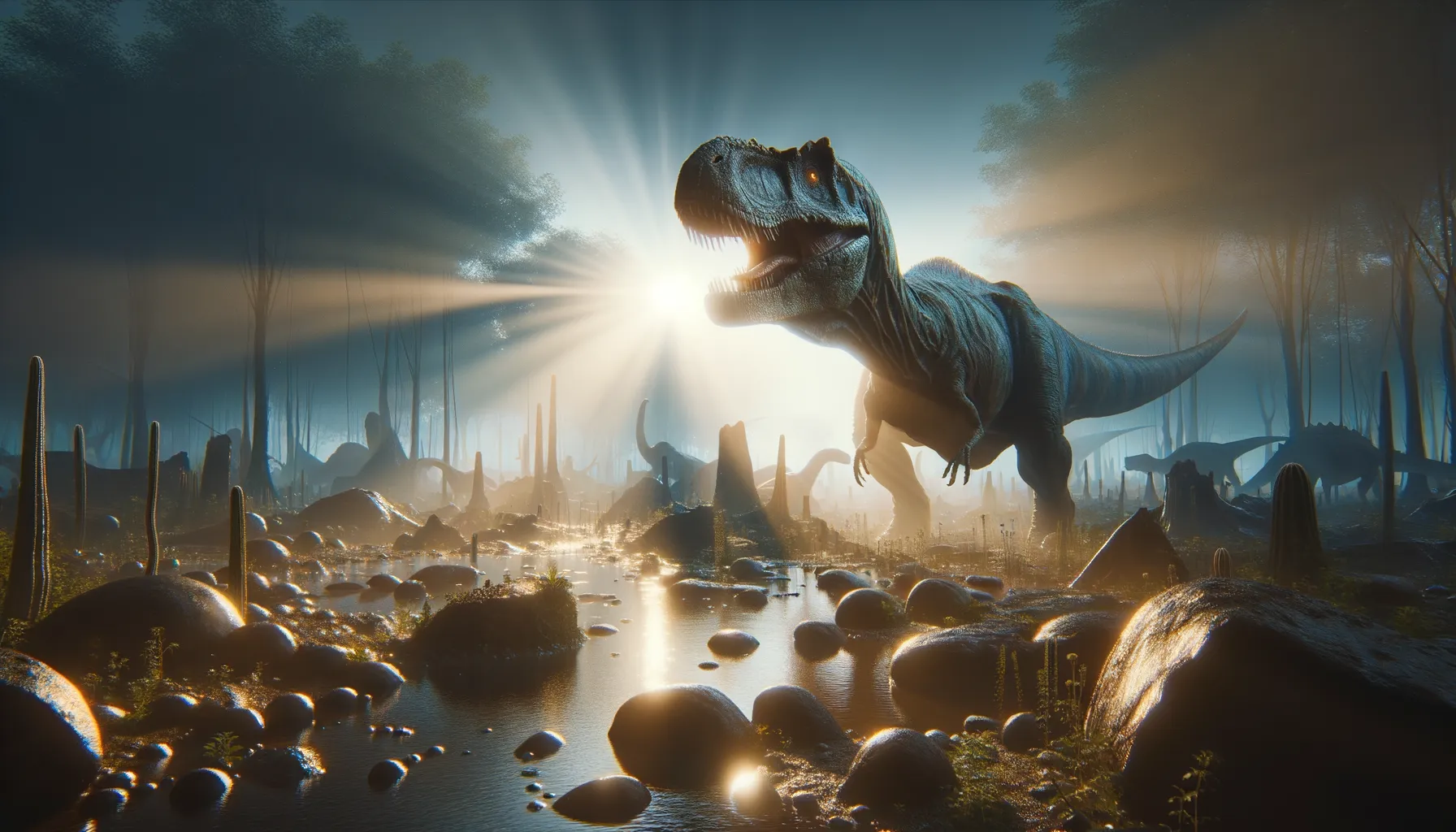
Dasygnathoides
Unlock the secrets of ancient mystery.
Period
Cretaceous
Length
Length data remain uncertain; estimates suggest medium size.
Height
Height estimations remain unavailable.
Weight
Unrecorded; believed to be of moderate size.
Dasygnathoides is an enigmatic dinosaur, with limited details available about its exact characteristics and behavior. Known primarily from scant fossil fragments, it's elusive and continues to be a topic of scientific research and speculation. Its place in the dinosaur family tree remains unconfirmed, and much about its way of life is still a mystery. Ongoing discovery efforts may one day shed light on this mysterious dinosaur's story.
Diet
Due to lacking sufficient fossil evidence, the diet of Dasygnathoides is not well-documented. It might have shared dietary traits with other theropods, assumed to be carnivorous.
Hunting
Without specific fossil evidence, its hunting behavior is a mystery. However, based on assumptions about similar theropods, it may have exhibited predatory traits.
Environmental challenges
With the sparse fossil record, specific environmental challenges it faced are unrecorded. It likely adapted to the dynamic Cretaceous environment, experiencing climate shifts and competition. Strata from the Cretaceous provide knowledge about climatic fluctuations that could have impacted its survival.
Speed
Details unknown due to insufficient fossil evidence.
Lifespan
Specifics not determined; varies like other theropods.
First discovery
No verified discovery; remains unidentified.
Fun Facts
- Dasygnathoides was a prehistoric reptile known primarily from its fossil teeth.
- The name Dasygnathoides means 'similar to Dasygnathus', which refers to its distinctive teeth patterns.
- It lived during the late Triassic period, approximately 230 million years ago.
- Dasygnathoides was likely a carnivore, feeding on smaller animals or carrion.
- Fossils of Dasygnathoides have been primarily found in Europe, giving clues about its habitat.
- The intriguing teeth of Dasygnathoides have helped paleontologists understand the diversity of early reptilian life.
- Dasygnathoides is not as famous as some other dinosaurs, but it plays a crucial role in understanding the evolution of predatory reptiles.
Growth and Development
Details specific to Dasygnathoides are unknown due to the fragmentary fossil record. Theropods, in general, experienced varied growth rates depending on environmental factors. Growth could have been influenced by resource availability.
Habitat
While its exact habitat remains uncertain due to insufficient evidence, it lived during the Cretaceous period. The era was characterized by diverse environments, including dense forests and river valleys, supporting varied life forms. This period was significant for evolutionary development.
Interaction with other species
Without specific evidence, details about its interactions are speculative. Other theropods experienced competition, predation, and environmental pressures steered interaction dynamics.
Natural lifespan
Not known due to incomplete fossil evidence.
Reproduction
Specific reproductive traits of Dasygnathoides are not documented. Like other theropods, reproduction might have involved laying eggs. Nesting habits remain speculative.
Social behaviour
Uncertain due to lack of findings; speculative based on theropod parallels. Some theropods exhibited pack or solitary behavior.
Fossil locations
No known verified fossil locations; research continues to determine existence.
